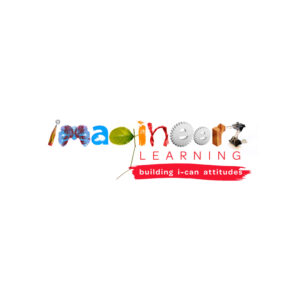Imagineerz@School Teaching Tip: Materials Tips

In the world of design thinking challenges, the materials you provide can spark the imagination and creativity of your students. Ensuring you have an ample and varied stock of materials is essential for fostering an environment where innovation can flourish. Here’s a deeper dive into managing and maximizing your materials for optimal student engagement and learning.
Tape: The Backbone of Building
Tape is indispensable in any classroom focused on creativity and construction. Its versatility makes it a favorite among students for connecting parts of their projects. Observing how quickly students use tape, we recommend planning for 1 roll per 2 students and keeping a few extras on hand. This ensures that every student has access to this crucial resource without interruption.
Card Stock: From Recycling Bin to Resource
Card stock is another cornerstone material, offering a sturdy yet flexible option for student creations. Encouraging donations of recyclable items like cereal boxes, toilet paper rolls, and egg cartons turns everyday objects into valuable resources. This not only supports creative projects but also teaches students about sustainability. To ensure materials are manageable for all students, keeping card stock no thicker than standard cardboard and pre-cutting larger pieces can help maintain accessibility and challenge.
Aluminum Foil: A Catalyst for Creativity
Aluminum foil’s malleability makes it a prized material in the classroom. However, its versatility means it can simplify challenges if not used judiciously. Implementing a limit of one arm’s length piece of foil per team or project encourages students to think critically about their use of materials. The Rule of 5 further promotes innovative problem-solving by restricting the use of any one material, pushing students to explore a wider range of solutions.
Materials Maintenance: Organizing for Inspiration
A well-organized materials area is key to a smooth-running classroom. Encouraging students to take part in organizing and maintaining the materials not only keeps your space tidy but also fosters a sense of responsibility and teamwork. Recognizing students who contribute to this effort can motivate others to participate. Additionally, keeping an eye on supplies and replenishing as needed ensures that creativity is never hindered by a lack of resources.
Creative Sourcing: Beyond the Classroom
Expanding your materials collection doesn’t have to strain your budget. Seeking donations from parents and local businesses can provide a diverse array of materials. From corporate contributions like straws from a juice bar to family donations of recyclable containers, every addition enriches the pool of resources available for student projects.
In Conclusion
Managing your classroom materials with thoughtfulness and creativity not only supports your students’ projects but also enhances their learning experience. By ensuring access to essential supplies, encouraging sustainability through recycling, and fostering an environment of organization and responsibility, you lay the foundation for endless innovation and discovery.
If you found this content helpful, you might enjoy this Imagineerz blog post and check out Creative Classroom Ideas for Recycling at School!



